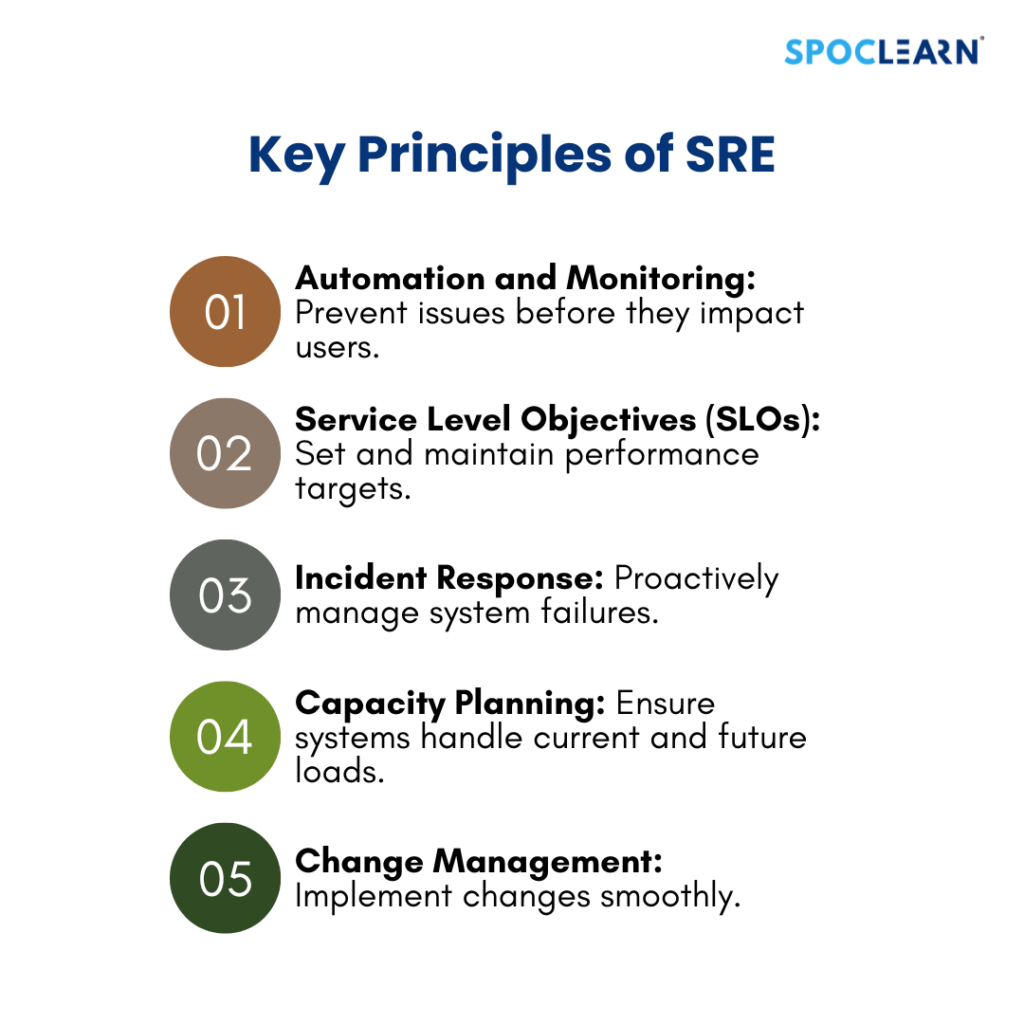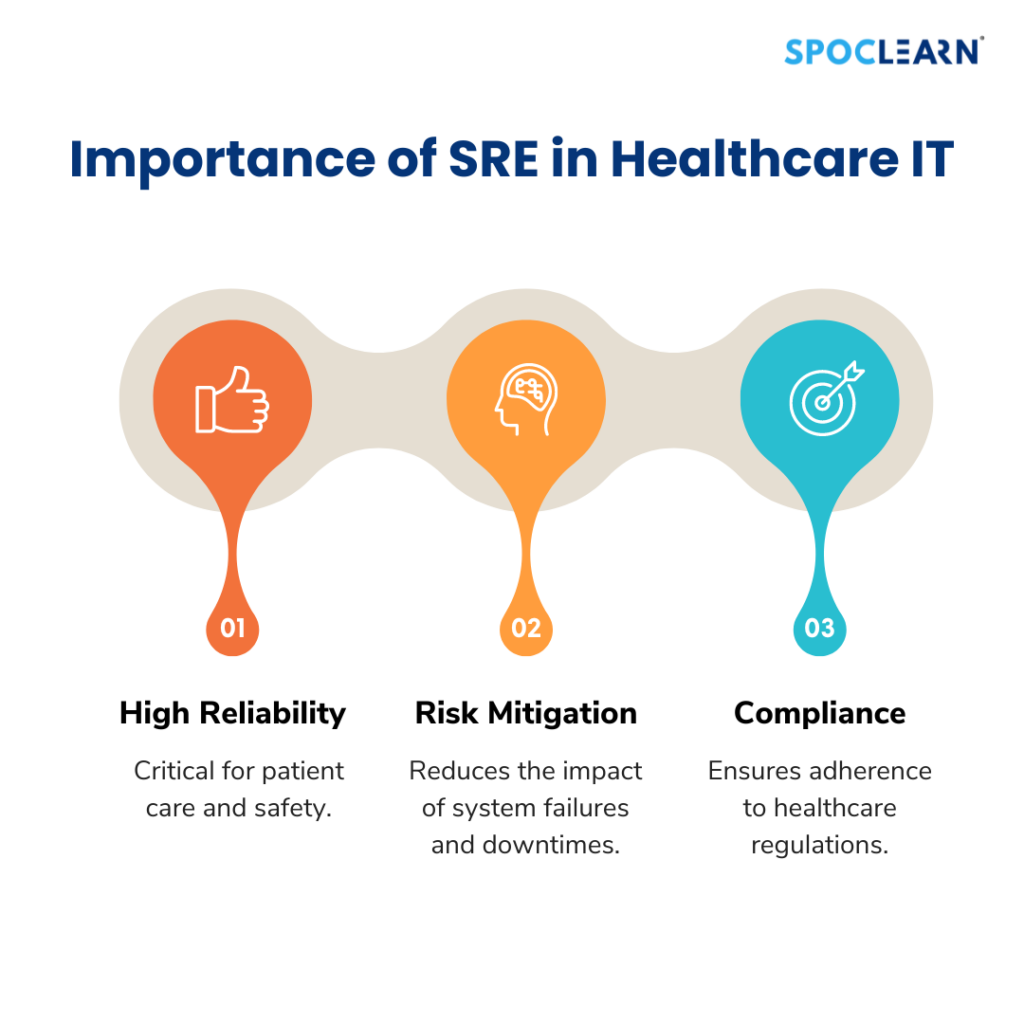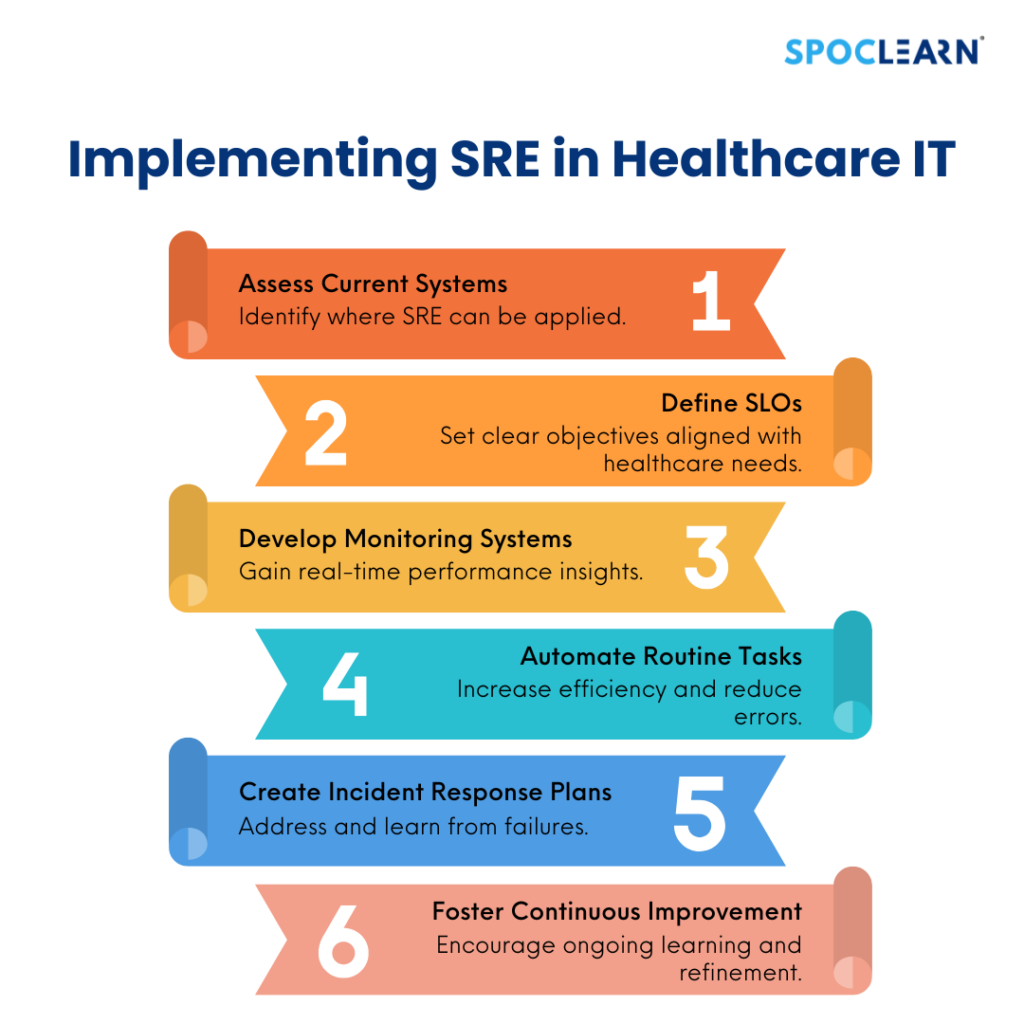Table of Contents
ToggleIntroduction to SRE in Healthcare IT
In an era where healthcare services increasingly rely on technology, Site Reliability Engineering (SRE) emerges as a vital discipline to ensure system reliability, performance, and resilience. Healthcare IT infrastructures are complex, with various systems managing electronic health records (EHRs), telehealth services, and critical patient data. Implementing SRE principles in healthcare IT can significantly enhance the robustness of these systems, ensuring they remain operational, secure, and efficient.
Understanding Site Reliability Engineering (SRE)
Site Reliability Engineering (SRE) is a set of principles and practices that incorporate aspects of software engineering and apply them to infrastructure and operations problems. The main goals of SRE are to create scalable and highly reliable software systems. Google originally developed the concept, and it has since become a standard practice for many organizations aiming to maintain the high availability and reliability of their services.
Key Principles of SRE

- Automation and Monitoring: Automating routine tasks and comprehensive monitoring to address issues before they impact users.
- Service Level Objectives (SLOs): Defining and maintaining clear performance targets to ensure services meet required reliability standards.
- Incident Response: Develop a proactive incident management strategy to swiftly address and learn from system failures.
- Capacity Planning: Ensuring systems can handle current and future loads without compromising performance.
- Change Management: Implementing controlled, incremental changes to minimize disruptions and ensure stability.
Importance of SRE in Healthcare IT
Healthcare IT systems demand high reliability due to their direct impact on patient care and safety. Downtime or failures can lead to significant consequences, including delays in treatment, loss of critical data, and compliance violations. SRE practices help mitigate these risks by fostering a proactive approach to system reliability and performance.

Key Benefits of SRE in Healthcare IT
- Enhanced System Reliability: Ensures continuous availability of healthcare services, minimizing disruptions in patient care.
- Improved Performance: Optimizes system performance to handle high loads efficiently, crucial for applications like EHRs and telemedicine.
- Better Compliance: Helps maintain compliance with healthcare regulations and standards by ensuring data integrity and security.
- Cost Efficiency: Reduces costs associated with system failures and unplanned downtime through efficient incident management and automated solutions.
Implementing SRE in Healthcare IT

Implementing SRE in healthcare IT involves several strategic steps, including aligning SRE principles with healthcare-specific requirements and fostering a culture of reliability and continuous improvement.
Step-by-Step Implementation Guide
- Assess Current Systems: Evaluate existing healthcare IT systems to identify areas where SRE practices can be applied.
- Define SLOs: Establish clear Service Level Objectives that align with the critical needs of healthcare applications.
- Develop Monitoring and Alerting Systems: Implement robust monitoring tools to provide real-time insights into system performance and potential issues.
- Automate Routine Tasks: Identify and automate repetitive tasks to reduce human error and improve efficiency.
- Create an Incident Response Plan: Develop a robust incident response strategy to quickly address and learn from system failures.
- Foster a Culture of Continuous Improvement: Encouraging a culture where continuous improvement and learning from failures are integral to operations.
Case Study: SRE in a Healthcare IT System
Scenario
A large healthcare provider faced frequent downtimes in their EHR system, leading to disruptions in patient care and compliance challenges. By implementing SRE practices, they aimed to enhance system reliability and performance.
Solution
- Assessment and SLO Definition: The healthcare provider assessed their existing systems and defined SLOs focused on uptime and response times for critical services.
- Monitoring and Automation: Implemented advanced monitoring tools and automated routine maintenance tasks.
- Incident Management: Developed a proactive incident response plan, including detailed runbooks and regular drills.
- Continuous Improvement: Established a feedback loop to continually refine processes based on incident learnings.
Results
- Reduced Downtime: Downtime was reduced by 40%, significantly improving service availability.
- Enhanced Performance: System performance improved, with faster response times and better handling of peak loads.
- Improved Compliance: Maintained better compliance with healthcare regulations due to improved data integrity and security.
SRE Foundation and SRE Practitioner Training
SRE Foundation Training
Objective: SRE Foundation training provides a comprehensive understanding of SRE principles and practices.
Key Topics Covered:
- Introduction to SRE and its importance in modern IT
- Core principles of SRE: SLOs, SLIs, SLAs
- Automation and monitoring techniques
- Incident response and management strategies
- Best practices for implementing SRE in various industries
Duration: Typically, 2 days of intensive training.
SRE Practitioner Training
Objective: SRE Practitioner training equips professionals with advanced skills and hands-on experience in implementing SRE practices.
Key Topics Covered:
- Advanced automation and scripting
- Detailed monitoring and alerting strategies
- Capacity planning and load management
- Change management and deployment best practices
- Real-world case studies and practical exercises
Duration: Typically, 2 days of immersive training, including practical labs and real-world scenarios.
Table: Comparison of SRE Foundation and Practitioner Training
| Aspect | SRE Foundation Training | SRE Practitioner Training |
|---|---|---|
| Target Audience | Beginners, IT professionals new to SRE | Experienced professionals, SRE teams |
| Focus Areas | Basic principles, introduction to SRE | Advanced practices, hands-on labs |
| Training Duration | 2-3 days | 3-5 days |
| Practical Components | Limited | Extensive |
| Certification | SRE Foundation Certification | SRE Practitioner Certification |
Conclusion
Implementing SRE practices in healthcare IT is crucial for building resilient, high-performing, and reliable systems. By adopting SRE principles, healthcare providers can ensure the continuous availability and security of their services, ultimately enhancing patient care and operational efficiency. SRE Foundation and Practitioner training programs play a vital role in equipping IT professionals with the necessary skills to successfully implement and manage SRE practices in healthcare IT environments. As the reliance on technology in healthcare continues to grow, the importance of robust and reliable IT systems cannot be overstated.
